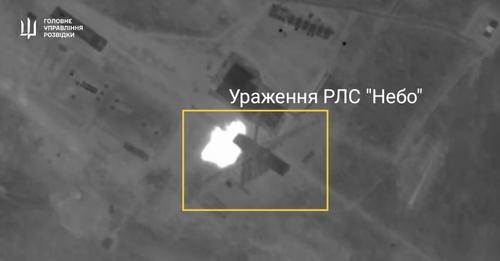Ukrainian troops hit two enemy radars in the Kursk region of the Russian Federation.
The Defence Intelligence of the Ministry of Defense of Ukraine showed the video on the issue.
According to the published footage, the strikes on Russian radars were carried out by Ukrainian drones.
These radars were used by the Russian military to monitor the airspace, including over the eastern regions of Ukraine. Therefore, they are a legitimate target for strikes by the Ukrainian military.

According to the Defence Intelligence of Ukraine, the position of the invaders’ Air Surveillance Troops was discovered on November 18 near the village of Dmitriyev (probably the city of Dmitriyev-Lhovsky) in the Kursk region. After that, the Russian military facility was hit.
Footage from Ukrainian intelligence shows that the drones struck enemy radars at night, flying directly over the stations and dropping explosive munitions on them.

The Defence Intelligence of Ukraine reported that two expensive Russian surveillance radars, the 55Zh6 Nebo radar and the Gamma-S1 radar, were damaged as a result of the successful strikes.
It is worth noting that this is not the first Ukrainian strike on Russian radars on the territory of the aggressor country.
In particular, in September of this year, soldiers of the SSU’s Special Group “Alpha” hit a Russian surveillance Nebo-U radar southwest of the city of Dmitriyev-Lgovsky in the Kursk region.

The Russian 55Zh6U Nebo-U VHF-Band transportable 3-D surveillance radar for detecting and tracking air objects, is a modernized version of the Soviet-era 55Zh6 Nebo radar. It was adopted by the army of the aggressor country in 1995.
The radar is designed to detect, determine the coordinates and track air targets of various classes: aircraft, cruise and ballistic missiles and other small and stealthy aircraft at a range of up to 600 km and at an altitude of up to 70 km.

The Russian 64L6 Gamma-S1 SHF-Band survey 3D-radar is designed to conduct a circular or sectoral survey of the airspace in the interests of air defense, airspace control, and civil air traffic. It provides a target detection range of up to 300 km, depending on the altitude of the aircraft.
